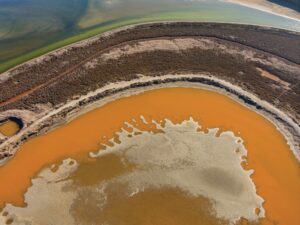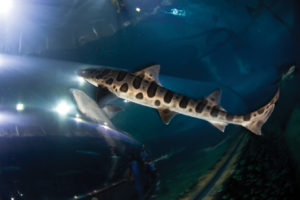“Imagine it’s all green,” says biologist Brian Alfaro, “and then you see purple.” He’s standing at the edge of LaRiviere Marsh, near Newark, pointing to a spot in the 100-acre expanse. “That’s where we found a big patch of them.”
Salt grass and pickleweed spread out before him, not a trace of purple in sight. It’s January, and the marsh is dull green. But last July, when Alfaro and his colleague Meg Marriott were mapping weeds here, they came across a striking plant. “We marked it as a weed,” Alfaro says, “but it was too pretty to be a weed.”
The velvety purple flowers turned out to be Point Reyes bird’s beak, a species once common in California’s coastal wetlands but long missing from this area, where decades of salt production took a toll. Remnant populations remain at Point Reyes (and way up in Eureka), but Alameda County, home to LaRiviere Marsh, hadn’t seen the plant for nearly a century.
“Most of us thought it was gone forever from the South Bay,” says Lorraine Parsons, an ecologist at Point Reyes National Seashore.
But at LaRiviere Marsh, things turned out differently. Part of the Don Edwards San Francisco Bay National Wildlife Refuge that borders southern San Francisco Bay, the onetime salt pond was restored to tidal influence in the 1980s. It has since become a flourishing wetland, home to wildlife like the California clapper rail. Now the appearance of Point Reyes bird’s beak adds a new testament to the restoration’s success.
“Everything had to be perfect out there for it to grow,” says June Smith, a botanist and volunteer manager at the refuge’s native plant nursery.
Like most marsh plants, bird’s beak requires specific hydrologic and sedimentary conditions. However, the hemiparasitic bird’s beak also needs certain other native plants to serve as hosts. Those include salt grass, pickleweed, and sea lavender. Alfaro thinks the patch in LaRiviere Marsh attached to creeping wild rye. (The relationship happens underground, so Alfaro cautions that “no one knows for sure.”)
But, he says, “Finding the bird’s beak in the marsh means the restoration worked, because it brought back native plants that allow bird’s beak to grow.”
Remarkably, the restoration took limited intervention. “This was sort of a passive effort,” admits John Bradley, deputy manager of the San Francisco Bay National Wildlife Refuge Complex. “We cut holes in the dams and let Mother Nature do the work.”
In 1983, refuge workers breached the levee that had cut the salt pond off from Newark Slough. Tidal water rushed in for the first time since 1915. “Besides sediment coming in with the tides, we also had seeds from other areas of the Bay shoreline,” says Bradley.
In a document on LaRiviere Marsh’s history, former refuge intern Donya Saied reported a “marked change in the pond” only months after the breach.
Later restoration involved more construction. Workers built water control structures, dug new slough channels, and removed more dikes. But compared to some undertakings, the restoration was pretty hands-off. “Some marsh restoration projects actually go out and plant cordgrass and pickleweed and other plants,” explains Bradley. “It’s very expensive.”
But here, for the relatively low cost of $40,000, a former crystallizer bed has been transformed into a habitat fit even for the finicky Point Reyes bird’s beak. In an era of budget constraints and abiding ecological needs, does the restoration of LaRiviere Marsh provide a timely lesson?
Amy Hutzel, Bay Area regional manager of the state Coastal Conservancy, thinks so. “There are probably a few lessons,” she says. “If you’ve got the right elevation and hydrologic connection, it’s really not that difficult to restore tidal wetlands out of salt ponds. Natural processes can do a lot of the work.” But only a small percentage of the current South Bay Salt Pond Restoration Project is right for equally low-key restoration.
Beth Huning, coordinator of the San Francisco Bay Joint Venture, says that LaRiviere Marsh has offered a positive model, even for more complex projects: “It gave everybody a snapshot of how the larger restored areas could look and how quickly they could come back.”

.jpg)




